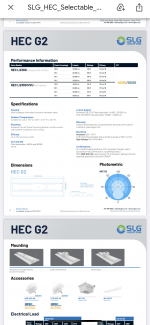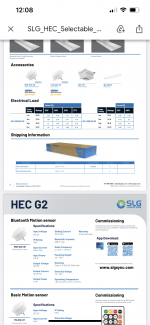Smash
Senior Member
- Location
- Philadelphia suburbs, PA USA
I have a customer with a large shop. They wanted to take advantage of a massive energy rebate and purchased 50 LED linear high bay fixtures. The lighting rep assured me that they would run on 240V. I’m assuming a smart driver of some sort. I expressed my concerns to the rep that I was dealing with old 3 phase delta high leg that is also a little on the high side at 250V again she said no problem. Question will there be a problem ? It’s been my understanding that yes 277 to 240 is not a problem and the smart driver adapts to first incoming voltage but there’s no going back to any other voltages not that I would need to. I also have 10 of these fixtures battery backup. There is 480 V available however I’m not a huge fan of running these fixtures at that voltage. There is no 277 available with out a transformer. I’m simply concerned if these fixture will last. I will try and post the exact fixture being used.



